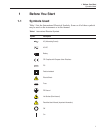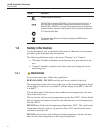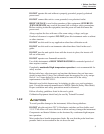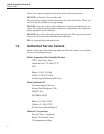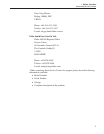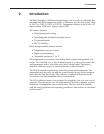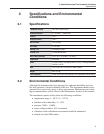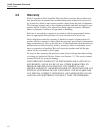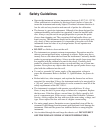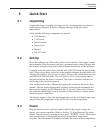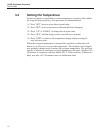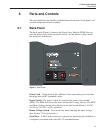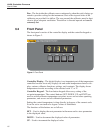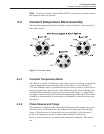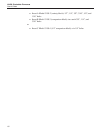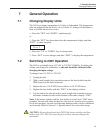
4 Safety Guidelines
•
Operate the instrument in room temperatures between 5-50°C (41-122°F).
Allow sufficient air circulation by leaving at least 6 inches of space be
-
tween the instrument and nearby objects. Overhead clearance needs to al
-
low for safe and easy insertion and removal of probes for calibration.
•
The furnace is a precision instrument. Although it has been designed for
optimum durability and trouble free operation, it must be handled with
care. Always carry the unit in an upright position to prevent the probe
sleeves from dropping out. The convenient fold-up handle allows one
hand carrying. The instrument should not be operated in excessively wet,
oily, dusty, or dirty environments. It is important to keep the well of the
instrument clean and clear of any foreign matter. Do not operate near
flammable materials.
•
DO NOT use fluids to clean out the well.
•
The instrument can generate extreme temperatures. Precautions must be
taken to prevent personal injury or damage to objects. Probes may be ex-
tremely hot or cold when removed from the instrument. Cautiously handle
probes to prevent personal injury. Always use the special sleeve tongs that
are supplied with the calibrator to remove the sleeve. Carefully place
probes on a heat/cold resistant surface or rack until they are at room tem-
perature. Never place any objects other than the special probe sleeves sup-
plied with the calibrator into the well.
• Use only a grounded AC mains supply of the appropriate voltage to
power the instrument. Refer to Section 3.1, Specifications, for power de-
tails.
•
Before initial use, after transport, and anytime the furnace has not been
energized for more than 10 days, the instrument needs to be energized for
a “dry-out” period of 1-2 hours before it can be assumed to meet all of the
safety requirements of the IEC 1010-1.
•
The instrument is equipped with operator accessible fuses. If a fuse
blows, it may be due to a power surge or failure of a component. Replace
the fuse once. If the fuse blows a second time, it is likely caused by fail
-
ure of a component part. If this occurs, contact Hart Scientific Customer
Service. Always replace the fuse with one of the same rating, voltage, and
type. Never replace the fuse with one of a higher current rating.
•
If a mains supply power fluctuation occurs, immediately turn off the in
-
strument. Power bumps from brownouts and blackouts could damage the
instrument. Wait until the power has stabilized before re-energizing the
instrument.
•
Air circulated through the unit keeps the chassis cool. DO NOT SHUT
OFF THE FURNACE WHILE AT HIGH TEMPERATURES.
11
4 Safety Guidelines



